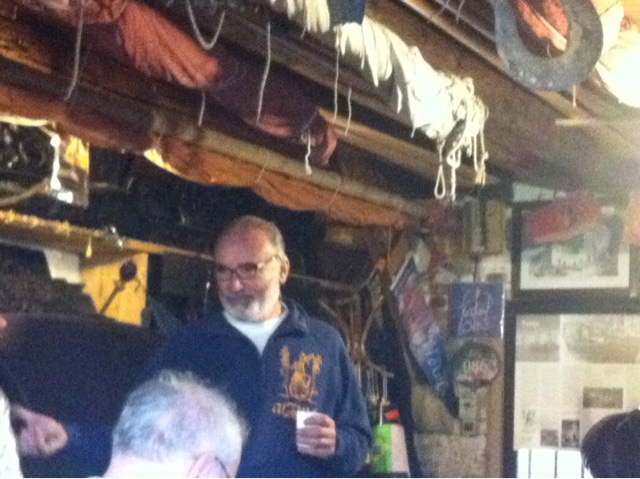Even on the cloudy grey days, arriving in Venice is magical. Domes and spires appear over the horizon. Vaporettos and all manner of small boats dart across the water. Thanks to the MIT's Joan Jonas representing the US at the Venice Biennale, it is also the destination for CAMIT's (Council for he Arts at MIT's) biennial art trip from October 1-6. I arrive from Milan, ready to meet 30 of our members and settle into a week of art, walking, art, food, art and did I mention we were going to immerse ourselves in art? Okay, first the non- art events.
Ghetto" is the Venetian word for foundry. A northern Cannaregio area island was far from the then city center and safe for metal work. In 1516 it was the location mutually agreed upon residence for the mostly Europan Jewish refugee population by the then powerful Venice Republic. The concept of Jewish "containment" was born here under friendly terms, however the concept of Jewish ghetto reappears hundreds of years later in ways the world is likely to never forget. This containment ensured life-style restrictions imposed by Jewish law while also ensuring that the Jews not set-up and practice the manual trades that Venetian law restricted them from. Consequently, the Jewish communities skilled doctors and money-lenders freely traveled the Venetian islands and served the artistic Venetians who helped build and decorate their synagogues, the first of which was complete in 1528. At its height, 5,000 lived here. Few returned from the Nazi camps after WWII and now the population is under 500. And yes the Kaufmann's were here and still are. Seeing my name tag, a woman appeared out of her shop to invite me in to view a prayer book containing the Passover readings used by the Venetian Kaufmann's. (Note there's a story to the double "n".) And for you Risotto lovers - the Jews are credited with introducing rice-based dishes - so you now know who to thank. I'm attempting to convince Steve to come back here in late July for a live performance of Shakepeare's, The Merchant of Venice, in English with Ruth Ginsburg as the judge. I kid you not!
Gondolas were originally designed over 1,000 years ago. We had lunch in one of the few remaining gondola boatyards and did we learn a lot! Traditionally, it was favored to have an arched cover to enable fires for warmth and to decorate with paint and gold gilding to indicate position and wealth. A 1562 law ensured the uniformly black paint familiar today, so that those suffering from plague could not be prejudiced against. Breaking this strictly enforced rule was punishable by rowing slaves for 5-years. At one time there were 150 models made in 50 different locations. Today there are 15 models built in only 5 locations. Wood is still brought from surrounding mountain areas and the skill of building is still passed down by word of mouth. Over 1,860 exist today and are strictly for tourists. It takes years of training to become licensed and master the 350-kg boats with 11-meter long oars and the 8-position sculpted "forcola" oarlock. So if you were thinking this might be a career option - know it's not as easy as it looks and you have to look REALLY good in stripes.



No comments:
Post a Comment